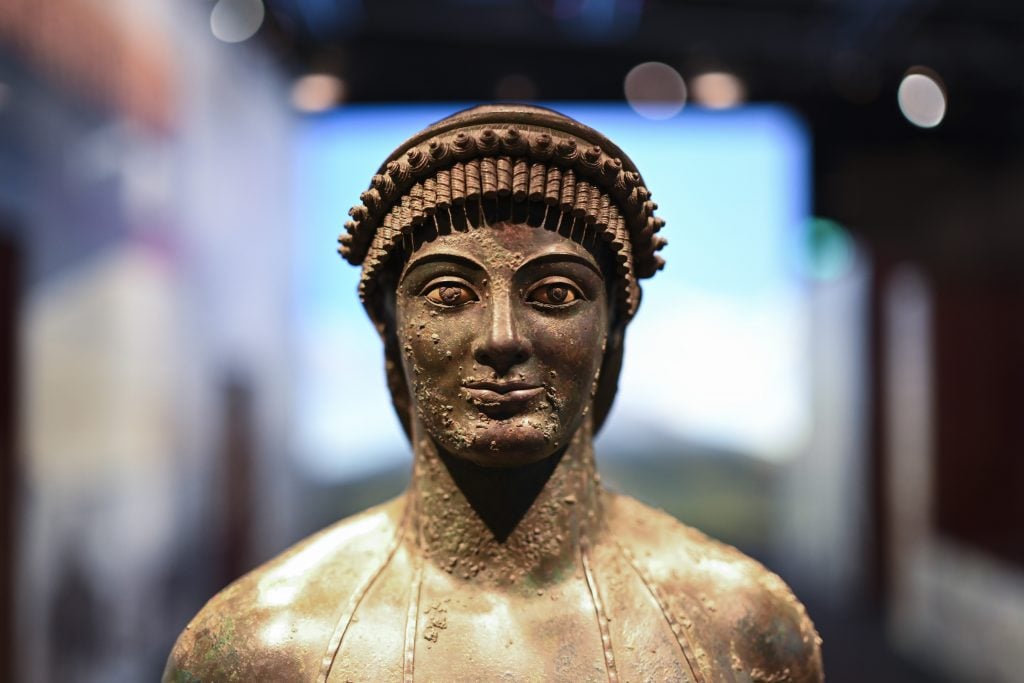The city of Pompeii, buried under volcanic ash in 79 CE after the catastrophic eruption of Mount Vesuvius, has captured the imagination of historians, archaeologists, and the public for centuries. Frozen in time, Pompeii offers a unique window into daily life in the Roman Empire, preserving homes, streets, markets, and even the final moments of its inhabitants. Now, an immersive exhibition titled “Pompeii” at the National Museum of Australia brings this ancient city back to life, combining artifacts, interactive displays, and a dramatic recreation of the volcanic eruption that sealed its fate.
This exhibition allows visitors to experience Pompeii’s vibrancy and tragedy, showcasing over 90 artifacts excavated from the site. From household items and tools to intricate frescoes and jewelry, the exhibit provides a poignant glimpse into the lives of the city’s residents before disaster struck. Here’s what you can expect from this captivating journey into the past.
The Vibrant Daily Life of Pompeii
Pompeii was a bustling Roman city situated near the Bay of Naples. Its location made it a prosperous hub for trade, agriculture, and leisure. The exhibition vividly depicts life in Pompeii before the eruption, focusing on various aspects of urban living:
The Homes of Pompeii
The exhibition recreates the interiors of typical Pompeian homes, revealing their elegance and functionality. Wealthy citizens adorned their homes with intricate mosaics and frescoes depicting mythological scenes, nature, and daily activities. One notable artifact on display is a mosaic of a guard dog, famously bearing the inscription Cave Canem (“Beware of the Dog”).
These homes also highlight the ingenuity of Roman architecture, with features like atriums for light and ventilation, and impluviums for collecting rainwater. Visitors can see replicas of these designs and understand how advanced Roman engineering was for its time.
The Markets and Public Spaces
Pompeii’s streets were lined with markets, bakeries, and workshops, teeming with activity. Artifacts like bronze scales, pottery, and cooking utensils shed light on the city’s thriving economy and culinary culture. The exhibition also recreates the Forum, the heart of Pompeii’s civic life, where citizens gathered for trade, politics, and socializing.
Leisure and Entertainment
Pompeians loved entertainment, and the city boasted several amphitheaters and bathhouses. The exhibition includes depictions of gladiatorial games and public baths, emphasizing their importance in Roman culture. Artifacts like gladiator helmets and decorative bath tiles provide a tangible connection to these leisure activities.
The Fateful Eruption of Mount Vesuvius
The centerpiece of the exhibition is a dramatic recreation of the eruption of Mount Vesuvius. On August 24, 79 CE, the seemingly dormant volcano erupted with little warning, spewing ash, pumice, and deadly gases. The exhibition uses state-of-the-art technology to simulate the eruption, immersing visitors in its terrifying progression.
The Impression on Pompeii
The simulation follows the eruption’s timeline, showing how the city was gradually buried under layers of volcanic material. Interactive displays and models depict the destruction of buildings, streets, and lives. Visitors can also see plaster casts of victims, made by pouring plaster into the voids left by decomposed bodies in the ash. These casts preserve the final moments of Pompeii’s inhabitants, capturing their poses and expressions in haunting detail.
Volcanic Science
The exhibit also explores the science behind volcanic eruptions, explaining the geological forces that led to Vesuvius’s explosion. Visitors can learn about pyroclastic flows, ash clouds, and the long-term effects of volcanic eruptions on ecosystems and human settlements.
The Artifacts: A Glimpse Into Roman Life
The exhibition features over 90 artifacts excavated from Pompeii, each telling a unique story about life in the city. Some highlights include:
•Jewelry and Personal Items: Rings, bracelets, and hairpins made of gold and bronze, showcasing the artistry of Roman craftsmanship.
•Household Tools: Lamps, cooking utensils, and storage jars that illustrate daily domestic life.
•Frescoes and Mosaics: Exquisite wall paintings and floor mosaics that reveal the aesthetic sensibilities of the Pompeians.
•Amphorae and Coins: Evidence of Pompeii’s trade networks and economy, with goods imported from across the Roman Empire.
These artifacts provide a tangible connection to the people of Pompeii, highlighting their creativity, industriousness, and humanity.
Rediscovering Pompeii: The Archeological Journey
The exhibition also delves into the history of Pompeii’s rediscovery. Buried for nearly 1,700 years, the city was accidentally unearthed in the 18th century during construction work. Since then, it has become one of the most important archaeological sites in the world.
Early Excavations
The exhibit includes information about early excavation methods, which were often crude and destructive. Early archaeologists prioritized finding treasures over preserving the site, leading to the loss of valuable historical context.
Modern Conservation Efforts
Today, Pompeii is a UNESCO World Heritage Site, and modern conservation techniques aim to preserve its fragile remains for future generations. The exhibition highlights these efforts, including the use of 3D scanning, digital mapping, and advanced preservation methods.
Pompeii’s Enduring Legacy
Pompeii’s story continues to resonate with audiences around the world. Its sudden destruction and preservation offer a unique snapshot of Roman life, capturing the beauty and fragility of human existence.
Cultural Influence
Pompeii has inspired countless works of art, literature, and film, from Edward Bulwer-Lytton’s novel The Last Days of Pompeii to contemporary documentaries. The exhibition includes a multimedia section exploring these cultural depictions, showing how Pompeii has influenced global culture.
Lessons from the Past
The tragedy of Pompeii serves as a reminder of nature’s power and humanity’s resilience. By preserving and studying the city, we gain insights into ancient civilizations while reflecting on our own vulnerabilities and triumphs.
An Immersive Journey Back in Time
The “Pompeii” exhibition at the National Museum of Australia is more than just a display of artifacts—it’s an immersive journey into the past. By combining history, science, and storytelling, it brings the lost city of Pompeii back to life, allowing visitors to experience its vibrancy, tragedy, and enduring legacy.
Whether you’re a history enthusiast, a lover of Roman culture, or simply curious about one of the ancient world’s most fascinating stories, this exhibition is an unmissable opportunity to connect with the people of Pompeii and the world they left behind.
Through its artifacts, recreations, and interactive experiences, “Pompeii” reminds us of the resilience of the human spirit, even in the face of unimaginable disaster. It’s a testament to the power of history to inspire, educate, and move us, even centuries after the events it seeks to illuminate.
No comments yet.








